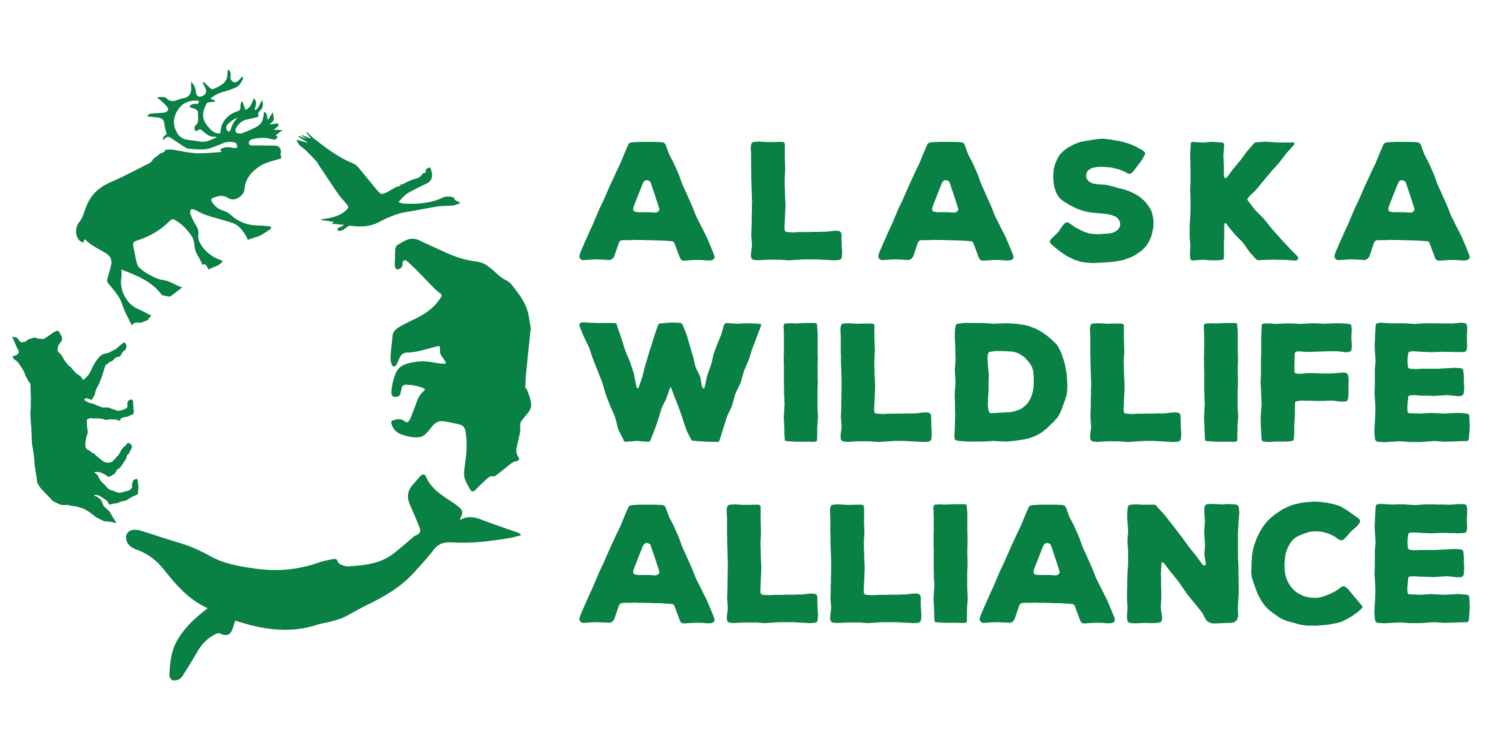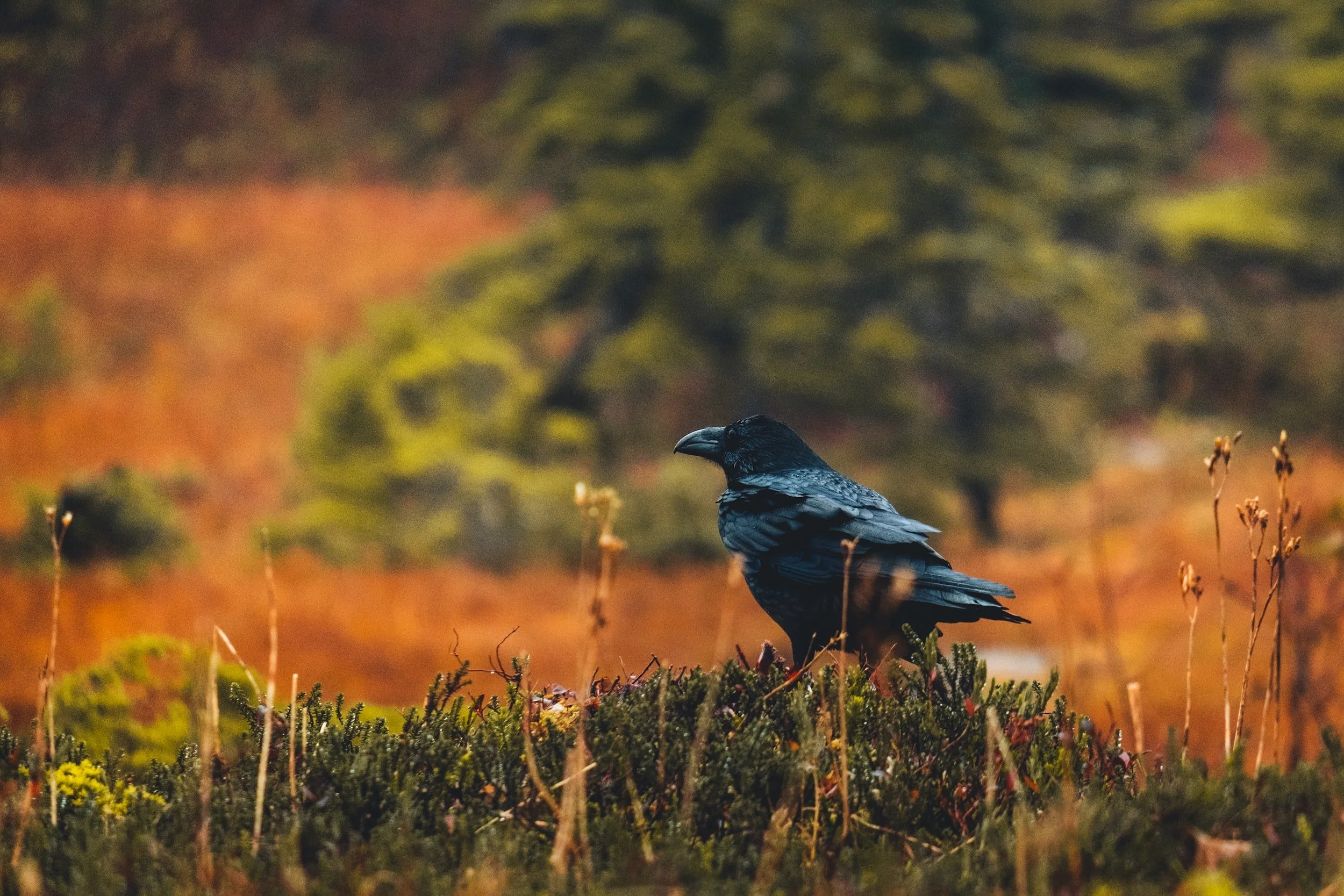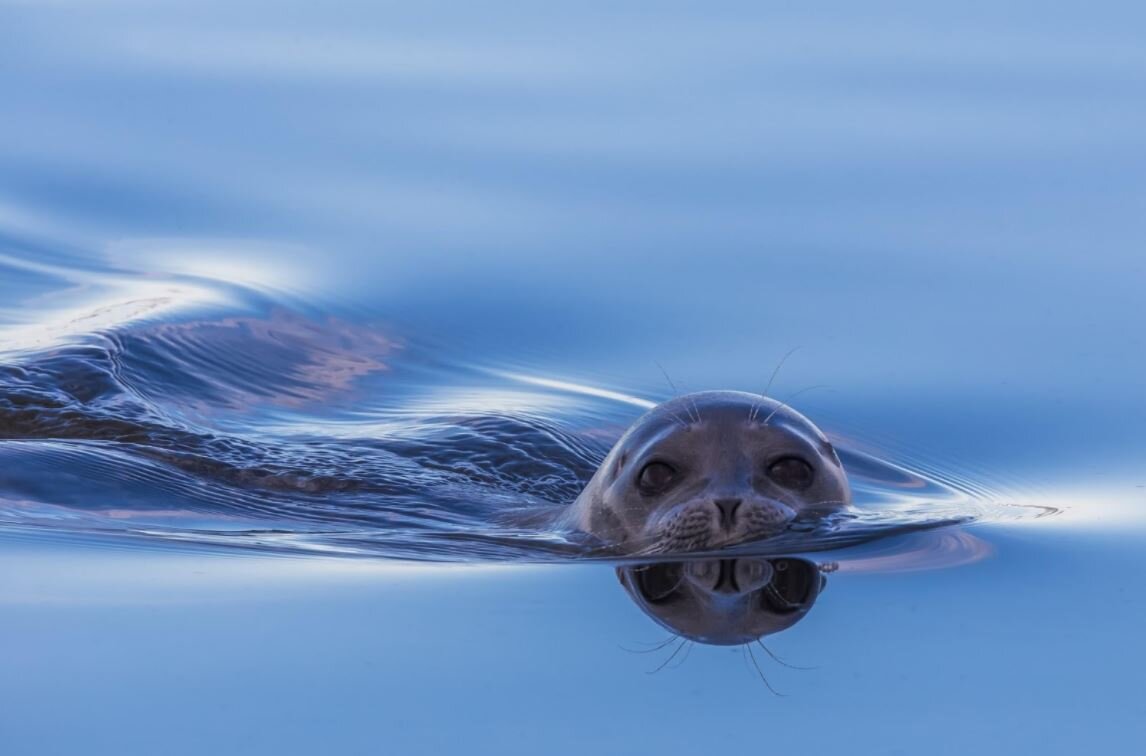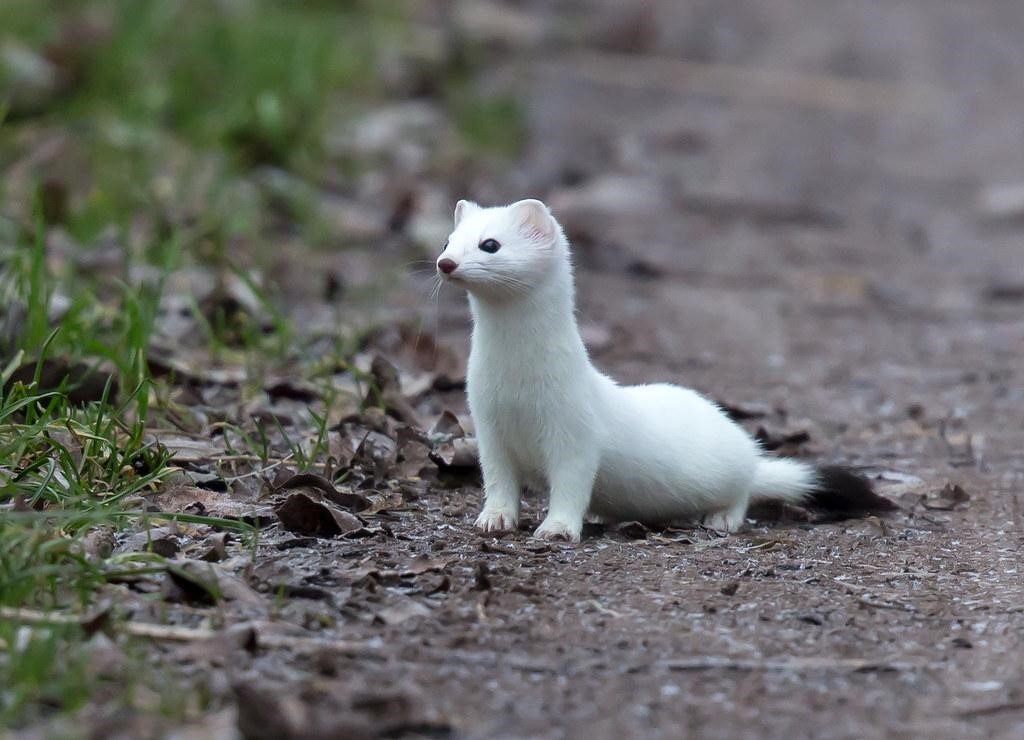We protect Alaska’s wildlife through citizen mobilization, advocacy, and education.
Alaska is home to a unique and spectacular array of aquatic and terrestrial wildlife species. The Alaska Wildlife Alliance (AWA) advocates for healthy ecosystems, scientifically and ethically managed to protect our wildlife for present and future generations.
Map the Trap: Reporting Traps Along Recreational Trails
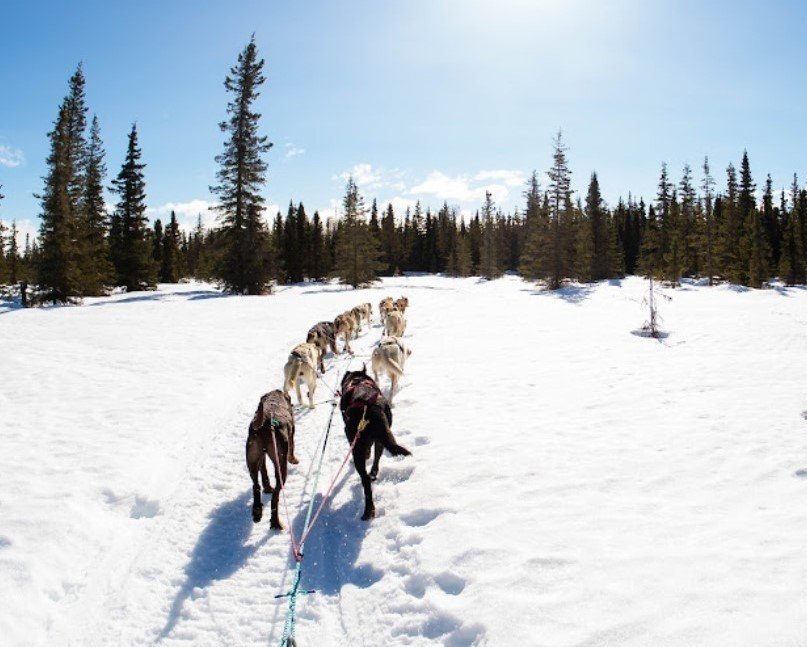
It’s trapping season in Alaska and currently, no agency collects data on incidental trap encounters, such as how many pets are caught in traps, where most pet trappings occur, or areas where trail users see wildlife caught in traps. AWA seek to understand the dynamics between traps and trail users, and provide information on where traps are located so recreationalists and their furry companions can stay safe.
Encounter a trap while recreating? Complete our form to have it mapped on our platform, and explore the map for recent and historical trap encounters.
Recent News
On April 10, Alaska Wildlife Alliance filed legal action, including a preliminary injunction, against the State for their adoption of an emergency regulation to reopen the unlawful Mulchatna bear control program.
Alaska Wildlife Alliance attended the Statewide Board of Game Meeting as a voice for Alaska’s wildlife, giving testimony, mobilizing public comment on proposals, and watching deliberations. Overall, AWA submitted comments on 16 proposals. Read on for the results.
This morning at the Board of Game meeting, the ADFG requested an emergency regulation to reinstate Mulchatna bear control, which was recently found to violate due process and the sustained yield principle.
At our screening of Broken Flight last week, bird experts shared numerous tips to help keep Alaska’s birds safe.
2024 Annual Report
We were busy as beavers in 2024— literally, we even built a beaver dam analog this year! From protecting polar bears from oil and gas harassment to securing hunting and trapping setbacks for wildlife crossings, we accomplished a lot for Alaska's wildlife in 2024.
Check out our 2024 Annual Report to learn more.
View our calendar of events for opportunities to learn about Alaska’s wildlife at home or online
Check out the Real People, Real Climate, Real Changes exhibit at Denali Education Center, up until July 4.
Join us at the Beartooth Theatrepub in Anchorage for a screening of the documentary, “A Good Wolf”.
Check out the Real People, Real Climate, Real Changes exhibit in Homer until August 29.
Check out the Real People, Real Climate, Real Changes exhibit at the Anchorage Public Library.
Species Spotlights
Watch or read longtime AWA member, Bob Armstrong’s latest post on the emotional lives of Alaska’s wildlife. “ I often spend months and sometimes years trying to understand the behavior of certain mammals in the wild…here are a few images and short stories that have impressed me the most.”
There’s a global traveler who’s in it for the long haul… the Arctic tern! Catch more about this special bird in this Species Spotlight.
The wolves of the sea? Killer whales, of course! Read more about one of the world’s most widespread mammals.
Chickens, barn doors, and Pacific halibut… how are they all connected? Find out in this Species Spotlight!
Meadow voles are not mice. Surprised? There’s a lot more to learn in this Species Spotlight!
Breach for the sky! With one of the longest migrations of any animal on the planet, this whiskered whale has a lot to celebrate. Check out more about the humpback whale in this Species Spotlight!
Boldly (yet functionally) accessorized, the Dall sheep is perfectly prepared for living in Alaska's rugged terrain. Meet this Alaskan icon in our next Species Spotlight!
Want to learn more about the G.O.A.T. that is not actually a goat? Jump in and read on, there’s a lot to discover about the mountain goat in this Species Spotlight!
Sockeye or “red” salmon are icons of Alaska. It’s only fair that this famous fish is highlighted in our next Species Spotlight! Read on to discover something new about this keystone species and learn about how so many species (including humans!) depend on it.
First you learned about tufted puffins, but now horned puffins? Can we even TAKE anymore adorable seabirds?? Yes, yes we can. Dive on into this new Species Spotlight to learn more about horned puffins! You won’t be disappointed. Hint: more pufflings and orange clown feet.
Baby tufted puffins are called "pufflings," and there's way more where that came from in our latest Species Spotlight blog post! Read on to learn everything you could ever want to know about tufted puffins.
The snowy owl is as beautiful as it is mysterious. Find out everything you need to know about this creature in this Species Spotlight!
The red fox would be the high-jump champion of any track team. They would also be the most clever… if that were ever a competition. Read more about the many talents of the red fox in this Species Spotlight!
Ringed seals are more than just adorable- they’re fascinating, too! And… famous? Oh, and they’re at-risk. Find out more about these rock sausages in this species spotlight!
Turns out weasels ARE known for tricks… learn everything there is to know about Ermine in Alaska!
Learn how you can help protect critical habitat for ringed and bearded seals in Alaska!
Watch our last Wildlife Wednesday to learn more about how hungry humpback whales bubble feed with efficiency!
Learn about cases in wildlife pathology and ways to become a wildlife veterinarian.
Learn about the taxonomy, natural history, population status, and management of Canada and cackling geese in Alaska.
Watch this presentation by Drew Hamilton as he shares his experiences with bears and teaches us about the behavior, migration, and conservation of bears on the Alaska Peninsula!
By the 1920s, Musk oxen had disappeared from Alaska, with the only remaining animals being found in east Greenland and Arctic Canada. These reintroduced specie are living relics from a prehistoric age, when musk oxen roamed the northern plains alongside mammoths and saber-toothed cats.
This little squirrel hibernates longer than any other species on earth…
Learn more about Alaska’s wildlife through our virtual Wildlife Wednesday presentations, held each month throughout the winter winter!


Join us for an overview of rats in the state of Alaska, including how they arrive, species they impact, efforts to remove them from islands, and measures to prevent future invasions. Our speaker is Jen Curl!
Jen is currently a wildlife educator for the Alaska Department of Fish and Game, and assists the invasive species representative (Joe Meehan) with rat-related issues for the ADF&G Department of Wildlife Conservation. She was a part of the team that eradicated rats from Rat Island in 2008 and worked on logistics for the project, and pre- and post-monitoring of the ecosystem from 2006 – 2010, and just returned from her eighth trip to the Aleutian Islands this summer.

Meet Juneau's Beaver Patrol, a group of volunteers who work to ensure that beavers coexist with people and salmon. Join long-time Beaver Patrol volunteer Chuck Caldwell to learn more about beavers, Beaver Patrol, and how you can get involved!

Catch wildlife biologist, Dan Ruthrauff, presenting on Alaska's migratory shorebirds!
Alaska is the breeding destination for millions of shorebirds from around the globe. Recent efforts to track the migratory movements of these birds have provided fascinating insights into their behavior, physiology, and conservation.
Dan is a Wildlife Biologist with the U.S. Geological Survey Alaska Science Center in Anchorage, Alaska. Dan has studied the ecology of the state's shorebirds at sites throughout Alaska, focusing on topics like breeding ecology, migratory movements, winter ecology, and the effects of climate change.

Join the Alaska Wildlife Alliance, Cooper Landing Safe Trails, and Homer community members who submitted proposals to the Board of Game to learn about their proposals and ways you can get involved.
This virtual meeting in an informational session about some of trap setback proposals up for Board of Game consideration in March. We will also walk you through the Board of Game comment and testimony process so you can get involved!

Watch Bob Armstrong (also known as "Nature Bob") narrate and give exclusive behind-the-scenes information on some of his most popular wildlife videos from his Vimeo account.
Bob has taken over 1,700 videos about nature in Alaska. He was a fisheries biologist and research supervisor for the Alaska Department of Fish & Game from 1960 to 1984. He also was an assistant leader for the Alaska Cooperative Fisheries Unit in Fairbanks where he taught courses in Fisheries and Ornithology at the University of Alaska.

Join guest speaker and marine mammal biologist, Kim Raum-Suryan, as we learn about Steller sea lions, global collaboration to reduce seal and sea lion entanglements, how Alaska students are helping reduce marine debris, and how we can all be a part of the solution.
Kim has over 30 years of experience as a marine mammal biologist. Kim works in the Protected Resources Division, NOAA Fisheries Alaska Region where she serves as the coordinator of the Steller sea lion recovery program, the international Pinniped Entanglement Group, and the Alaska Region Ocean Guardian School Program.

Listen to our guest speaker, Veronica Padula, speak on the various ways in which marine debris impacts people and wildlife in the Bering Sea. Marine debris is an environmental justice issue for many communities, and the more we know and understand this complex issue, the better prepared we are to find solutions to it.
Padula is the Assistant Director of the Ecosystem Conservation Office, the environmental department of the Aleut Community of St. Paul Island Tribal Government. She loves seabirds and the ocean and considers herself very fortunate to do a job that allows her to study both.

Humpback whales and tourism in Juneau: What can we learn from the COVID-19 pandemic? The cancellation of cruise ships during Summer 2020 due to the COVID-19 pandemic provided an unprecedented opportunity to assess humpback whales in the near absence of whale-watching vessels near Juneau. Heidi Pearson will present her collaborative study with University of Alaska Fairbanks and NOAA to assess humpback whale residency patterns and stress hormone levels during this unusual low tourism year.
Pearson is an Associate Professor of Marine Biology at the University of Alaska Southeast. Her research focuses on the behavior, ecology, and conservation of marine mammals with a focus on humpback whales and sea otters in Alaska, and dusky dolphins in New Zealand.

Jump in and watch biologist Tim Lescher discuss the natural history of wolves, as well as the inaccuracies, myths, and legends attributed to the species.
Lescher has worked with a variety of wildlife, ranging from endangered turtles in Indonesia to salmon and captive wolves in Alaska. He currently lives in Anchorage with his wife and their Siberian husky.

Catch our conversation with Brian Zwiebel discussing his birding adventures at five far-flung Alaskan destinations. We explore the birds and logistics of visiting off-the-beaten path locations such as Utquiagvik (Barrow), Arctic National Wildlife Refuge, Dutch Harbor and the Baby Islands, Nome, and the Pribilof Islands including both St. Paul and St. George Islands. We discover all four eiders, the three Jaegers, three species of loons, seabirds galore, a plethora of shorebirds and so much more. One thing is for sure, if you ever visit Alaska you will do your very best to return!
Brian is the co-owner and photo guide at Sabrewing Nature Tours. Combined, he has spent over four months in Alaska exploring several far-flung destinations in the final frontier. Brian has authored articles for Audubon and B&H Photo-Video’s Explora blog, and his award winning images have been internationally published in a number of books and magazines.

Did you know that several species of sharks inhabit Alaskan waters? The three common species include the charismatic salmon shark, the underappreciated spiny dogfish, and the elusive Pacific sleeper shark. Watch a discussion of the different sharks found in Alaskan waters and how these species are assessed and managed, and learn about some fantastic research partnerships with exciting results!
Guest speakers include Sabrina Garcia, research biologist with Alaska Department of Fish & Game, and Dr. Cindy Tribuzio, research fishery biologist with NOAA Fisheries Science Center.

Did you know there are multiple species of hummingbirds on the Kenai Peninsula in Alaska? Watch this virtual presentation with Todd Eskelin as he discusses the current and future status of Anna’s Hummingbirds in Southcentral Alaska. Learn about his discoveries over the past four years of hummingbird field work, how you can invite hummingbirds to your home, and what the future may hold in a changing climate.
Eskelin is a Wildlife Biologist with the Kenai National Wildlife Refuge. His professional interest in birds began at Lewis and Clark College in Portland, Oregon. Since then, he worked as the bander-in-charge at the fledgling Alaska Bird Observatory, trained banders during several temporary stints with the US Fish & Wildlife Service and established and operated MAPS stations for Denali National Park, Alaska Peninsula/Becharof National Wildlife Refuge and Izembek National Wildlife Refuge. He eventually settled at Kenai National Wildlife Refuge in 2001 where he continues to work as a wildlife biologist.

Join Dr. Tim Fullman as he shares information about caribou in Alaska and his work studying caribou movement on the North Slope to inform the balance of human development and wildlife conservation.
Dr. Fullman is a Senior Ecologist with The Wilderness Society in Anchorage, Alaska, investigating caribou responses to energy development and other human activity. In this, and his previous research exploring elephant movement patterns and impacts on vegetation and large herbivores in southern Africa, he strives to develop scientific information that can be applied to positively influence decision making for conservation and management.

Join Alaska Department of Fish & Game (ADF&G) wildlife biologist, Arin Underwood, as she covers the Threatened, Endangered, & Diversity (TED) program in the state of Alaska.
The TED program conducts research on species of conservation concern in Alaska. As part of the Department of Wildlife Conservation at ADF&G, the TED program encompasses teams of researchers across the state with ongoing projects on golden eagles, collared pika, lesser yellowlegs, bats, olive-sided flycatchers, and more.

Check out our conversation about salmon ecology and habitat stewardship to explore the question of how we can work in practical ways towards a fish-filled future in Alaska with guest speakers, Galen Hecht and Benjamin Meyer.
Hecht is the Stream Watch Coordinator at Kenai Watershed Forum. With a background in Human Ecology focused on water resources, he is passionate about community based efforts to steward rivers. Meyer is the Water Quality Coordinator at Kenai Watershed Forum. His research on juvenile salmon and their habitat has taken him to rivers throughout Alaska, and he continues to be amazed by the salmon lifecycle.

Enjoy a photographic presentation and discussion about Alaska’s lynx with photographer and naturalist, Colin Tyler. Tyler shares his images and experiences with our state’s only wild cat.
Tyler is an Alaska-based wildlife and travel photographer who resides at the Eagle River Nature Center. Since his first sighting near the Arctic Circle in 1999, he has had several encounters with the elusive lynx and created a collection of images to share.

Join University of Alaska Anchorage Master's student, Sanaa Siddiqi, as she discusses bumblebees in Alaska!
The Last Frontier is home to many wondrous species, all of which have a role to play. The Arctic bumblebee may be among the smallest of them, but its role is just as big as any. Curious? Siddiqi sure was when she first heard of them! View this Wildlife Wednesday presentation to learn more about this incredible bumblebee, as well as how it benefits the Alaskan ecosystem.

How do scientists keep track of individual whales? Learn about the technique of photo-identification and how you can help contribute to whale research with guest speaker, Emma Luck.
Luck is an Alaska-based marine naturalist and wildlife photographer. She holds a marine biology degree from the University of Alaska Southeast and has worked on research projects with humpback whales and killer whales in Alaska and Norway.

Can you pick up and keep that animal part you found? The path to the answer may be convoluted, but the bottom line is generally simple- yes you can, or no you can’t. As you will discover, it depends on what the animal is, who manages it, where you find the part, and who you are.
Riley Woodford is the statewide information officer for the Division of Wildlife Conservation at the Alaska Department of Fish & Game. He is the editor of Alaska Fish & Wildlife News and produces the Sounds Wild! radio program. In pursuit of skulls and bones he has gleaned shrew skulls from owl pellets, cooked brown bear and wolf heads, and salvaged two smelly dead humpback whales.

Western blackheaded budworms are a natural part of the forests in Southeast Alaska. Typically their populations are low and damage is negligible, but every 30 to 40 years their numbers build up and they become the most significant disturbance agent in the forest. An outbreak is currently underway with damage visible in most communities throughout Southeast Alaska. This presentation will take a look back at previous outbreaks, and the impacts will be reviewed as well as the status of the current outbreak.
Dr. Elizabeth Graham has been an entomologist with the USDA Forest Service Forest Health Protection Team since 2012 stationed in Juneau, AK. Her work focuses on monitoring the health of the forest and communicating that information to land managers and the general public. Sometimes accused of rooting for the insects, she is really just impressed by the impact insects have on forest health and the importance of their role in forest ecology.

Marine conservation biologist, Rick Steiner, gives a summary of the current science on the impacts of climate change in Alaska’s vast ocean ecosystems, including ocean habitat, fish, seabirds, marine mammals, and coastal communities. He then shares what we can do about it. The presentation uses some of the best professional photography of Alaska’s ocean ecosystems.
Steiner is a marine conservation biologist in Anchorage, AK, and he is formerly a marine conservation professor with the University of Alaska covering the Arctic (in Kotzebue), Prince William Sound and the Northern Gulf of Alaska (in Cordova), and then Anchorage. He fished commercially in Alaska for many years, crewed on NOAA ships, and now consults for the U.N., governments, and NGOs around the world on conservation issues.

Join us for a virtual presentation by Kenai National Wildlife Refuge Biologist Todd Eskelin, as he discusses Hummingbird Banding on the Kenai Peninsula.
Todd will describe his work banding hundreds of hummingbirds on the Kenai Peninsula, what we know so far and what we hope to learn in the future. Some people know we have Rufous Hummingbirds breeding on the Kenai Peninsula, but few are aware we have an increasing population of Anna’s Hummingbirds. Learn how to tell the difference between them. What can you do to attract them and contribute to this project? How close we are to having them year round in south central Alaska?

Join Alaska Wildlife Alliance for this special Wildlife Wednesday conversation with Ann Fienup-Riordan, one of the authors of "Nunakun-gguq Ciutengqertut, They Say They Have Ears Through the Ground: Animal Essays from Southwest Alaska".
Yup'ik people of southwest Alaska believe that all animals, even tiny insects, possess minds. Animals are not viewed as resources but as co-inhabitants of a sentient world and as nonhuman persons responsive to thoughts, words and deeds.
These essays - based on information shared over twenty years at community meetings, regional gatherings, and discussions with elders - focus on some of the most important species (including moose, bears, seals, salmon, and birds) and how relations with these species have both changed and remained the same over the past two decades.
In a place where hunting and fishing are still part of day-to-day life, these views of animals remain very much in action. Hunters are advised that if they are over-confident and brag, they will not catch; animals will hear them and they will get nothing. Conversely, what one gives away will be replaced. And if you are compassionate, others will wish for your future success.

Join Alaska Wildlife Alliance as we host a virtual presentation by Dr. Timothy Mullet, an ecologist with the Kenai Fjords National Park, to learn why sound is important to nature, people, and science, and the impacts noise has to the wilderness of the Kenai Peninsula.

Have you ever been mud crawling, eelgrass snorkeling, and crab wrangling in Southeast Alaska? Join us on a virtual exploration of marine resources and communities as we wade or dive into the ocean. Four graduate students share their adventures learning about the sea otters, crabs, clams, fish, abalone, and so much more that live off the coast of Prince of Wales Island.
Join Alaska Wildlife Alliance as we host this virtual presentation by University of Alaska Fairbanks graduate students, Sonia Ibarra, PhD Candidate, Becca Cates, MS Student, Lia Domke, PhD Student, and Ashley Bolwerk, MS Student, to learn about sea otters, nearshore communities, and graduate students in Southeast Alaska.

Join Alaska Wildlife Alliance Southeast Chapter for this Wildlife Wednesday presentation on fishers!
Fishers are mammalian carnivores that have been naturally expanding their range in areas across North America for decades and have recently further expanded into the coastal temperate rainforest of Southeast Alaska.
What habitats are fisher associated with in the area? How might they impact native species? Join Caitlin Kupferman, a research coordinator at the Savannah River Ecology Laboratory, as she discusses her research examining fisher occupancy, habitat associations, and competition with native species Southeast Alaska.

Watch Alaska Wildlife Alliance's free Wildlife Wednesday presentation by Alaska Department of Fish & Game's Division of Sport Fish area management biologists, Mike Booz and Holly Dickson, to learn what's happening with East Cook Inlet razor clams, with an update on the stock since the 2015 closure.
Holly and Mike will show how ADF&G conducts surveys on the beaches each year to gather data on the abundance, growth, and survival of these razor clams. They will also provide an update on the abundance of razor clams on the East Cook Inlet beaches in recent years, and will describe some of the other factors influencing clam populations, including annual survival and growth rates. And finally, they’ll discuss what a fishery for East Cook Inlet razor clams might look like when the beaches are-open.

Join us in celebration of Bristol Bay's wildlife! We'll hear from three speakers to learn about wildlife in Bristol Bay and how you can help protect them.
Drew Hamilton will show us how much bears love salmon!
Mandy Migura will teach us about beluga whales in Bristol Bay!
Anne Coray will talk about her personal history with the Bristol Bay area and share excerpts from her debut novel, a love story set in a remote, fictional artists’ community in Southwest Alaska and inspired by the Pebble Mine project.

Join Alaska Wildlife Alliance for this virtual presentation by Jeff Fair, Alaskan Field Biologist and Author, on his book "In Wild Trust". Explore the McNeil experience and learn how Larry Aumiller developed an ecological trust between humans and bears across his 30 years at McNeil.
*Note, we forgot to hit the record button until just a few minutes into the presentation, apologies!*

Watch this virtual Alaska Wildlife Alliance Wildlife Wednesday presentation by Valentina Melica, PhD candidate with University of Alaska's College of Fisheries and Ocean Sciences, to learn how hormones, tiny molecules produced by the body, are the secret to understanding how whales are coping with a changing environment.

Join Alaska Wildlife Alliance for this free presentation on trapping regulations on the Kenai Peninsula. We will cover where trapping is allowed, the types of traps you may encounter, ways to release pets from traps, and how to report dogs in traps and incidental catch. We also cover the Cooper Landing bypass and the implications for wildlife.

Dr. John Morton, former Supervisory Biologist at the Kenai National Wildlife Refuge, explores the proposed management changes at the Kenai National Wildlife Refuge. Proposed regulatory changes for the refuge include killing brown bears over bait, more inhumane methods of furbearer trapping, and traps and snares near hiking trails and campgrounds. John will review current refuge management, detail the proposed regulatory changes, and describe the opportunity for you to weigh in to the decision process. The 2 million-acre Kenai National Wildlife Refuge is the most visited refuge in Alaska by both residents and tourists.

Watch our latest virtual presentation as we host Maile Branson, Ph.D. student with University of Alaska Fairbanks' Department of Biological Sciences to learn why surveillance of zoonotic pathogens in wildlife is a crucial component of global public health.
Maile teaches us about the dynamics of Avian Influenza Virus (AIV) in Alaska, and shares her work examining the prevalence and subtype diversity of AIV in the breeding seabird populations of the Bering Sea.

Join the Alaska Wildlife Alliance for this virtual presentation and career spotlight by Carl Johnson as he shares stories of naturalism with bears and moose, wildlife photography, existing ethical guidelines in how to conduct wildlife photography responsibly, and some case studies on unethical behavior. He will also discuss the varied paths that people can take to become a professional nature photographer.
Carl Johnson, owner of Alaska Photo Treks, has been photographing Alaska's wildlife landscapes for over twenty years. During that time, digital photography and social media interactions have increased the proliferation of photography as a hobby, and the pressures on natural photographic subjects. While many people are eager to get great shots of wildlife, they rarely think of how their photography impacts their subjects.

Drew Hamilton, President of Friends of McNeil River, shares his experiences with bears and teaches us about the behavior, migration, and conservation of Beard of the Alaska Peninsula.
Alaska Wildlife Alliance is a grassroots group founded in Anchorage in 1978 dedicated to ecosystem based management in Alaska.
Drew Hamilton is an award-winning photographer and President of the Board of the nonprofit Friends of McNeil River. Drew worked at McNeil River State Game Sanctuary and Refuge from 2010-2015. Since leaving McNeil, he leads wildlife-focused photography tours around North America. While his annual migration takes him to look for polar bears in Canada and Alaska, brown bears in Alaska, monarch butterflies in Mexico, wolves in Yellowstone, and aurora wherever he can find it, his heart will always be at McNeil River.

Watch this free Wildlife Wednesday virtual presentation as we host Marian Snively, a wildlife education specialist with Alaska Department of Fish and Game, to learn about bats in Alaska.
Marian will help us unravel the mysteries of bats in Alaska by educating us about their life history characteristics, what species are present in Alaska, and some results of two ADF&G research projects that she was involved in.

Watch this free virtual presentation and wildlife career spotlight by Dr. Kathy Burek as she teaches us about various cases in wild Alaska animal pathology. These will range from moose to marine mammals, unusual mortality events, and some discussion of relevance to climate change issues. She will also provide some advice for pathways to becoming a wildlife veterinarian. WARNING: Photos will be graphic so please be prepared.

Learn how to turn your Alaska experiences into compelling testimony for wildlife and public lands. This training will prepare you to speak up during public hearings.

Join this virtual presentation by Alaska SeaLife Center's Halley Werner and Savannah Costner, for a look back on ASLC's 2020 Wildlife Response Season. From fluffy sea otter pups to sassy seals, get an inside look at what it takes to rescue and rehabilitate injured and orphaned marine wildlife in Alaska. With a focus on the 2020 season, animal Care Specialists from the Alaska SeaLife Center will share their stories and experiences, and provide tips about how you can help if you find an animal in need.

Join this virtual presentation by Alaska SeaLife Center's Halley Werner and Savannah Costner, for a look back on ASLC's 2020 Wildlife Response Season. From fluffy sea otter pups to sassy seals, get an inside look at what it takes to rescue and rehabilitate injured and orphaned marine wildlife in Alaska. With a focus on the 2020 season, animal Care Specialists from the Alaska SeaLife Center will share their stories and experiences, and provide tips about how you can help if you find an animal in need.










































About
Find out about our organization,
mission, and the results of our decades of advocacy.
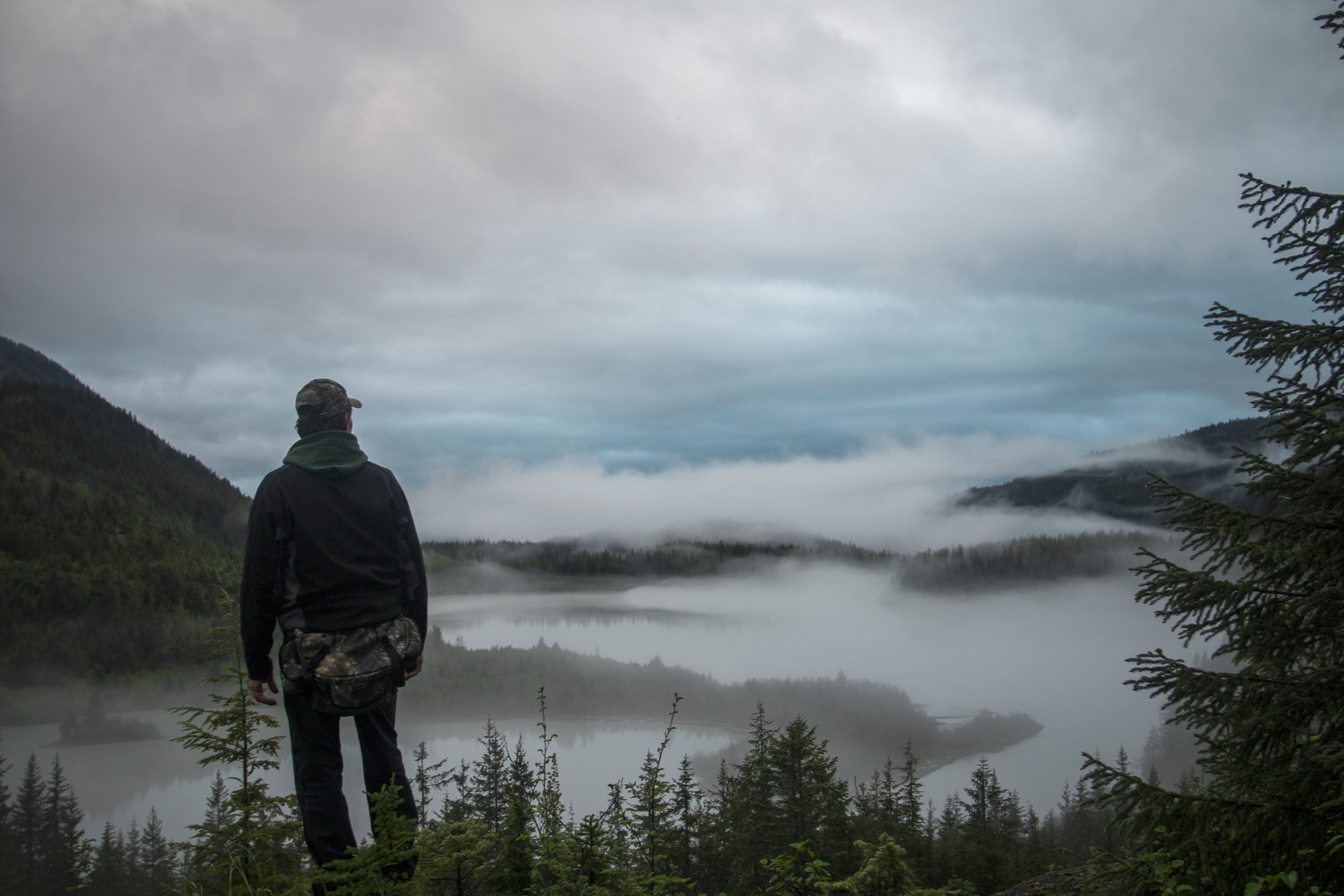
Take Action
Ready to take the next step? You can become a contributor to our cause, or participate yourself.

Purchase our swag
Looking for a gift for yourself or someone in your life? Purchase a gift that gives back towards wildlife!
